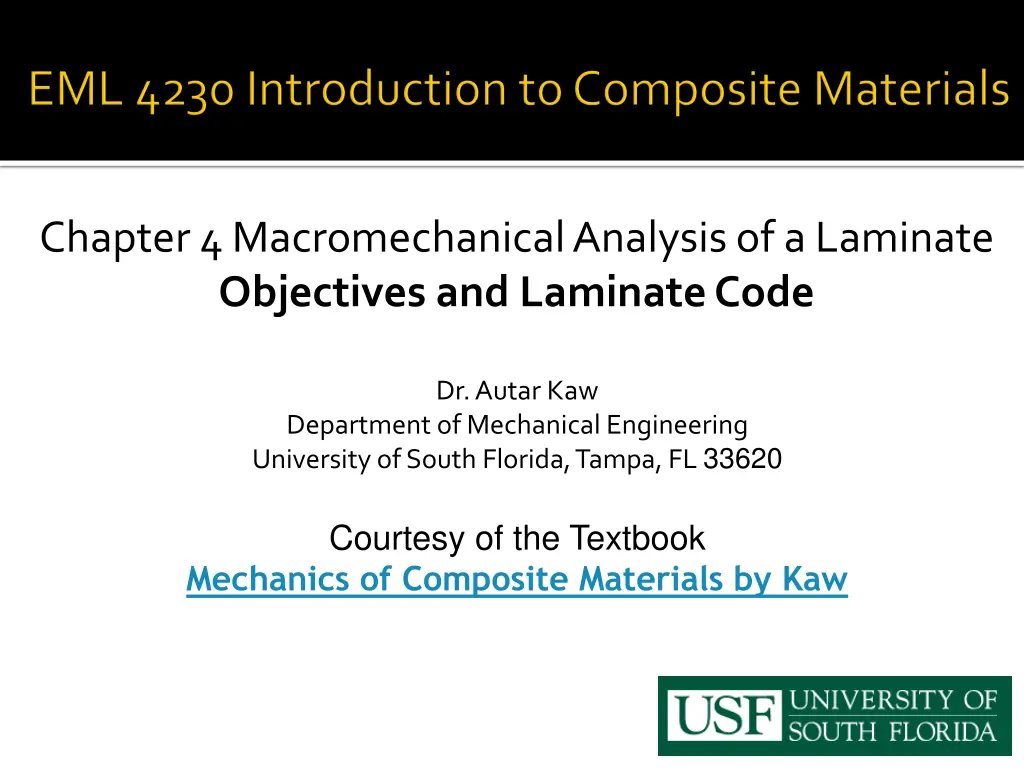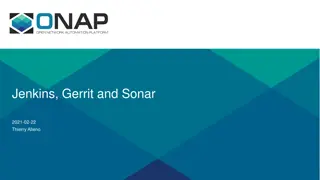
Macromechanical Analysis of Laminate Structures
Delve into the intricacies of laminate structures through this comprehensive guide on laminate stacking sequences, mechanical load relationships, and elastic stiffness calculations. Explore the concepts of symmetric, balanced, cross-ply, and quasi-isotropic laminates to understand their unique properties and applications in composite materials.
Download Presentation

Please find below an Image/Link to download the presentation.
The content on the website is provided AS IS for your information and personal use only. It may not be sold, licensed, or shared on other websites without obtaining consent from the author. If you encounter any issues during the download, it is possible that the publisher has removed the file from their server.
You are allowed to download the files provided on this website for personal or commercial use, subject to the condition that they are used lawfully. All files are the property of their respective owners.
The content on the website is provided AS IS for your information and personal use only. It may not be sold, licensed, or shared on other websites without obtaining consent from the author.
E N D
Presentation Transcript
Chapter 4 MacromechanicalAnalysis of a Laminate Objectives and Laminate Code Dr. Autar Kaw Department of Mechanical Engineering University of South Florida, Tampa, FL 33620 Courtesy of the Textbook Mechanics of Composite Materials by Kaw
Fiber Direction x y z FIGURE 4.1 Schematic of a lamina
Understand the code for laminate stacking sequence Develop relationships of mechanical and hygrothermal loads applied to a laminate to strains and stresses in each lamina Find the elastic stiffnesses of laminate based on the elastic moduli of individual laminas and the stacking sequence Find the coefficients of thermal and moisture expansion of a laminate based on elastic moduli, coefficients of thermal and moisture expansion of individual laminas, and stacking sequence
0 -45 0 [ / 45 / 90 / 60 / 30 ] 90 60 30
0 -45 90 0 [ / 45 / 90 / 60 ] 0 / 2 90 60 0
0 -45 60 0 [ / 45 / 60 S] 60 -45 0
0 -45 __ 0 [ / 45 / 60 S] 60 -45 0
Graphite/Epoxy 0 Boron/Epoxy 45 Boron/Epoxy -45 Gr B 0 [ / 45 ] S Boron/Epoxy -45 Boron/Epoxy 45 Graphite/Epoxy 0
Symmetric Laminate: For every ply above the laminate midplane, there is an identical ply (material and orientation) an equal distance below the midplane. Balanced Laminate: For every ply at a + orientation, there is another ply at the orientation somewhere in the laminate.
Cross-ply Laminate: Composted of plies of either 0 or 90 (no other ply orientation). Quasi-isotropic Laminate: Produced using at least three different ply orientations, all with equal angles between them. Exhibits isotropic extensional stiffness properties.
Elastic Moduli Stacking Position Thickness Angles of Orientation Coefficients of Thermal Expansion Coefficients of Moisture Expansion
P = xx (4.1) A (due to axial load) P x = xx P P AE z (a) (due to bending load) z M M = xx x z (b) (due to axial and bending load) M M z 1 x x = = xx z + 0 P P z = z + 0 (c) FIGURE 4.2 A beam under (a) axial load, (b) bending moment, and (c) combined axial and bending moment.
x x z Mx z Mxy Myx Nx My Nxy y y Nyx Ny (b) (a) Nx = normal force resultant in the x direction (per unit length) Ny = normal force resultant in the y direction (per unit length) Nxy = shear force resultant (per unit length) Resultant forces and moments on a laminate.
x x z Mx z Mxy Myx Nx My Nxy y y Nyx Ny (b) (a) Mx = bending moment resultant in the yz plane (per unit length) My = bending moment resultant in the xz plane (per unit length) Mxy = twisting moment resultant (per unit length)






















